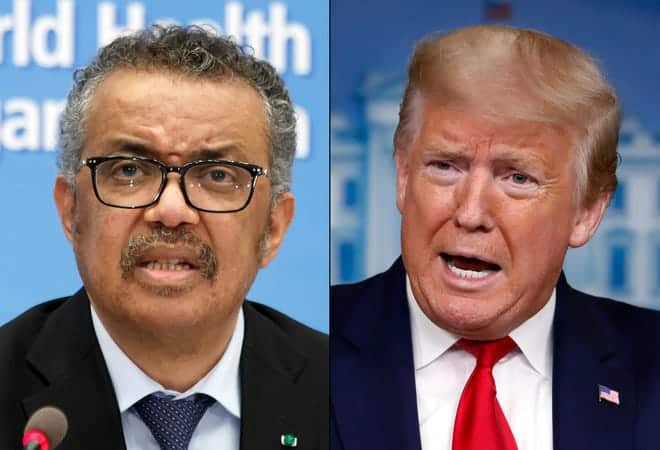
The other week US President Donald Trump did the unthinkable. In the midst of the largest global pandemic since the turn of the 20th century, he threatened to withdraw all US funding to the only globally-focused health body – the World Health Organization (WHO). The infraction? Being soft on China and ultimately downplaying the COVID-19 threat.
While the WHO may have had some early missteps, President Trump is likely embarking on this move to distract from issues he is facing domestically. Not to delve too deeply into politics, in his defense the President may indeed not truly be aware of the history or broad-reaching role of the WHO and its importance in linking an international response to COVID-19 and past responses including Ebola. There may also be a lack of understanding of the day-to-day support that the WHO provides to developing and first world countries including the United States.
The WHO: A policy organization with a global reach
For an analysis we conducted through our policy organization mapping practice, we have researched the WHO and the role it plays in response to vaccine and global pandemics. Based in Geneva, Switzerland, the WHO was founded in 1948, is a specialized agency of the United Nations. Their broad mandate is to act as a coordinating authority on a broad range of international health issues ranging from infectious diseases and maternal/child health to access and chronic diseases. The WHO is essentially the only organization that has a global finger on the pulse of the world’s health care system. Beyond a select few, not many life science industry professionals have the WHO on their radar screens.
Part of the WHO’s responsibility is ensuring the effective monitoring and prevention of vaccine-preventable diseases on a global level. By its very nature COVID-19 is a world-wide problem that will ultimately require a world-wide response. Starting with a handful of infected individuals in China it has progressed within a few short months to 180 countries and territories. The transmission of this highly contagious virus can happen quite rapidly. For example in a single international flight a COVID-19-positive person infects a group of passengers who all arrive within hours to the host country and subsequently infect dozens of others. There is of no greater importance now for the WHO given the fact that COVID-19 is (1) the focus of a global pandemic and (2) that experts have stated that only a vaccine will allow the world to return to normal. The ultimate goal is for COVID-19 to be classified as a “vaccine-preventable disease”.
SAGE – Management of Vaccine-Preventable Diseases
The Strategic Advisory Group of Experts (SAGE) is the principal advisory group to the WHO for vaccines and immunization. It is charged with advising the WHO on overall global policies and strategies, ranging from vaccines and technology, research and development, to delivery of immunization and its links with other health interventions. Beyond its support of vaccine development, SAGE’s responsibilities extend to the control of all vaccine-preventable diseases as part of an integrated, people-centered platform of disease prevention that spans the human life-course and in the context of health systems strengthening.
SAGE plays an all-encompassing role as recommendation for use of vaccines against a specific pathogen is required prior to official issuance of the WHO prequalification. Prequalification is required for procurement of the product by UN agencies and for financing by other agencies. The annual budget for the entire category of infectious diseases in 2017 was $765M, with $280.5M for vaccine preventable diseases. Already not much, considering the huge cost of lives and economic damage caused by COVID-19.
WHO SAGE Responsibilities: All critical to advancing a global COVID-19 containment and prevention
- Progress towards the achievement of the goals of control of vaccine-preventable diseases worldwide such as those laid out in the Decade of Vaccines Global Vaccine Action;
- Major issues and challenges to be addressed with respect to achieving the disease control goals, including issues and challenges to achieving and sustaining high and equitable vaccination coverage;
- Immunization program response to current public health priorities;
- General policies, goals and targets including those related to vaccine research and development;
- Adequacy of WHO’s strategic plan and priority activities consistent with its mandate and considering the comparative advantage and the respective roles of partner organizations;
- Engagement of WHO in partnerships that will enhance achievement of global immunization goals.
Given importance of developing a global response now is not the time to cut funding for the only organization responsible for that global response. A case in point in the WHO response to Ebola another potential pandemic disease. While there were likewise blunders in the initial response, it should be acknowledged that as of February 2020, in the Democratic Republic of Congo (DRC) the epicenter of the outbreak, there are no new cases. Over 320,000 individuals are vaccinated. Looking forward, it is likely that a vaccine will be developed for COVID-19 and the world needs a coordinated approach as multiple entities are involved in researching, manufacturing and ensuring that billions are vaccinated. Neither the US nor any other country can go it alone. We will have the opportunity to improve the WHO but that should come after this crisis recedes. This is certainly not the time to pull funding from this monumental effort.
Melissa Hammond is Managing Director at Snowfish, a company which has been partnering with leading life science companies for almost two decades. Snowfish helps clients to map and understand the unique stakeholder landscapes which drive how a disease is identified and managed. This includes a unique approach to organizations including policy groups, government agencies, professional societies and advocacy groups. To lean more, please reach out to us by goint to snowfish.net.
- Market Access: The Latest Hurdle for Treating Alzheimer’s and Dementia - June 14, 2023
- Rare Disease Outreach a Missed Opportunity - November 7, 2022
- So You Read Our Previous Post on Biomarkers? - August 1, 2022



